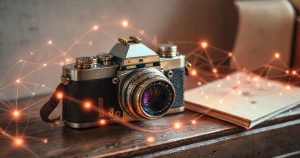Mastering AI-Generated Art: A Beginner’s Comprehensive Tutorial
Welcome to the fascinating world of AI-generated art, where creativity knows no bounds and technology meets imagination. In this comprehensive tutorial, we’ll take you on a journey to master the art of creating stunning visuals using the best AI art tools and techniques, all for free. Whether you’re a beginner looking to explore your creative side or a seasoned designer seeking to elevate your skills, this guide is tailored to empower you with the knowledge and confidence to produce professional-grade artwork.
The traditional path to creating professional-quality images involves mastering complex tools like Photoshop, investing in pricey stock photo subscriptions, or hiring designers at rates that most small businesses and individual creators simply can’t afford. However, with the advent of AI image generators, this barrier has been significantly lowered, allowing anyone with an idea and a few descriptive words to produce stunning visuals in seconds. In this article, we’ll delve into the world of AI-generated art, exploring how these tools work, the best practices for using them, and how you can leverage them to bring your creative vision to life.
At the heart of AI image generation lies a sophisticated technology that understands natural language prompts and translates them into visual content. This process, known as latent space navigation, enables the AI to synthesize entirely new images by blending and recombining learned features in ways that match your description. The quality of your output depends heavily on how well you communicate your vision through text, making prompt engineering a critical skill for anyone serious about AI image generation. By crafting descriptive, contextual language that paints a complete picture, you can unlock the full potential of these tools and achieve results that rival professional photography.
Different AI models have different strengths and specializations, which is why experienced creators often maintain accounts across multiple platforms. Some models excel at photorealism, producing images virtually indistinguishable from actual photographs, while others specialize in artistic styles like anime, digital art, or painterly effects. According to research published by leading AI labs, model architecture choices during training significantly impact both the speed of generation and the stylistic tendencies of the output. This explains why you might get dramatically different results from the same prompt on different platforms, and why it’s worth exploring various options to find which AI image generator best aligns with your creative vision and use cases.
Understanding How AI Image Generators Process Your Prompts
When you type a prompt into an AI image generator, you’re initiating a complex computational process that involves analyzing your words, breaking them down into semantic components, and mapping them onto learned visual concepts. This process happens through what’s called latent space navigation, where the AI doesn’t simply retrieve stored images but actually synthesizes entirely new visual content by blending and recombining learned features in ways that match your description. Understanding this fundamental mechanism helps explain why certain prompting techniques work better than others and why the same prompt can yield different results across different AI models.
The quality of your output depends heavily on how well you communicate your vision through text, which is why prompt engineering has emerged as a critical skill for anyone serious about AI image generation. Unlike traditional search engines where keywords are king, AI image generators respond better to descriptive, contextual language that paints a complete picture. For instance, rather than simply typing ‘cat,’ a prompt like ‘a fluffy Persian cat with bright blue eyes sitting on a Victorian-style velvet cushion, soft natural lighting, professional photography’ provides the AI with rich contextual information that leads to far more compelling results. Many creators find that experimenting with different prompting approaches reveals patterns and techniques that consistently produce better results for their specific needs.
Different AI models have different strengths and specializations, which is why experienced creators often maintain accounts across multiple platforms. Some models excel at photorealism, producing images virtually indistinguishable from actual photographs, while others specialize in artistic styles like anime, digital art, or painterly effects. According to research published by leading AI labs, model architecture choices during training significantly impact both the speed of generation and the stylistic tendencies of the output. This explains why you might get dramatically different results from the same prompt on different platforms, and why it’s worth exploring various options to find which AI image generator best aligns with your creative vision and use cases.
Features and Benefits of AI-Generated Art
AI-generated art offers a multitude of features and benefits that make it an indispensable tool for creators of all levels. From the ability to produce professional-grade visuals in seconds to the democratization of visual content creation, AI image generators have opened doors that were previously sealed shut for non-designers. With the power to create stunning images without extensive training or expensive software, individuals and small businesses can now compete on a level playing field with larger corporations, bringing their unique perspectives and ideas to the forefront.
The benefits of AI-generated art extend beyond the creative realm, offering practical solutions for marketing, education, and entertainment. For marketers, AI-generated images can enhance social media posts, blog articles, and advertisements, capturing audiences’ attention in a crowded digital landscape. Educators can leverage AI art to create engaging, customized illustrations for lesson plans, textbooks, and presentations, making complex concepts more accessible and fun for students. Meanwhile, the entertainment industry can utilize AI-generated art for concept design, storyboarding, and even full-scale production, pushing the boundaries of visual storytelling.
Getting Started with AI-Generated Art
Getting started with AI-generated art is simpler than you think. The first step is to choose an AI image generator that fits your needs, considering factors such as ease of use, output quality, and the type of artwork you wish to create. Many platforms, like Icebox AI, offer free versions or trials, allowing you to experiment and find the tool that best suits your creative vision. Once you’ve selected your platform, it’s time to craft your first prompt, using descriptive language to guide the AI in creating your desired image.
As you delve deeper into the world of AI-generated art, you’ll discover a community of creators who share their knowledge, techniques, and inspirations. Online forums, social media groups, and dedicated websites are filled with tutorials, tips, and showcases of amazing artwork created with AI. By engaging with this community, you can learn from others, get feedback on your work, and stay updated on the latest developments and advancements in AI image generation.
FAQs About AI-Generated Art
Q: Can I use AI-generated images for commercial purposes?
A: Yes, you can use AI-generated images for commercial purposes, but the specifics depend on the platform’s terms of service and the licensing model they employ. Most modern AI image generators, including free platforms like Icebox AI, provide commercial usage rights for images you create, though some may require attribution or impose restrictions on certain use cases. Before using any AI-generated image commercially, always review the platform’s terms of service to ensure compliance.
Q: How do I improve the quality of my AI-generated images?
A: Improving the quality of your AI-generated images starts with crafting high-quality prompts. Use descriptive, contextual language that paints a complete picture of what you want to create. Experiment with different prompting techniques, such as adding more details, trying out various styles, or combining prompts for unique effects. Additionally, exploring different AI models and platforms can help you find the one that best matches your vision and skill level.
Conclusion
In conclusion, AI-generated art represents a powerful tool for creators, offering a new frontier in visual content generation that’s accessible, versatile, and constantly evolving. By understanding how AI image generators work, mastering the art of prompt engineering, and exploring the vast capabilities of these tools, you can unlock new avenues of creativity and bring your imagination to life in ways previously unimaginable. Remember, the journey into AI-generated art is just beginning, and with the right guide and a willingness to experiment, you can become a part of this exciting movement, pushing the boundaries of what’s possible and creating something truly remarkable.
As you embark on this creative journey, don’t hesitate to explore, to experiment, and to push the limits of what AI-generated art can achieve. Whether you’re a seasoned artist looking to expand your toolkit or a beginner eager to express yourself, the world of AI art is here to inspire, to empower, and to transform your creative process. So, start crafting your prompts, generating your images, and watching as your vision takes shape before your eyes. The future of art is here, and it’s more accessible than ever.
For more information on getting started with AI-generated art and to explore the latest tools and techniques, visit Icebox AI, your gateway to the world of free AI image generation. With its powerful, easy-to-use platform and commitment to making AI art accessible to all, Icebox AI is the perfect companion on your journey into the fascinating realm of AI-generated art.



